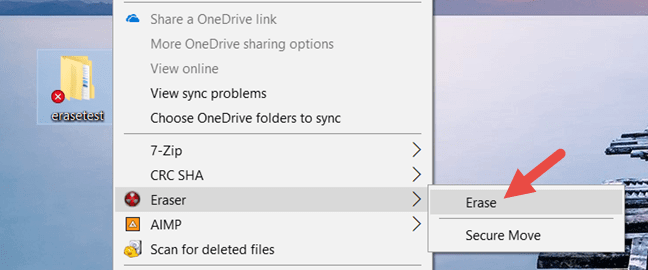Everyone deletes files constantly. Manually, automatically, the action has almost become machine-like. But, where do files go when deleted? Do they still exist? Can they be recovered? Well, in fact even if you delete files they are still on your hard drive…
What if you learn that your files are actually never deleted? But then, what really happens to them? where do files go when deleted? Well, just because you move files to the recycle bin doesn’t mean they get deleted. Rather, it waits patiently in a kind of purgatory for you to decide what to do with it. And even if you empty your recycle garbage can, the file doesn’t get deleted completely, its location is simply marked as empty by the operating system.
Where Do Files Go When Deleted?
As everybody knows, when you delete files on your hard drive, they first go to the recycle bin of the operating system while disappearing from the location they were before. You can still access and see your files in the recycle bin, you can even restore them. The recycle bin is actually just a folder like any other folder on your computer. The only difference is that it’s hidden. there is a hidden folder named $RECYCLE.BIN on every partition of your Windows where do files go when deleted.

Where Do Files Go When Deleted From Recycle bin ?
Windows 10 tracks files using either a File Allocation Table or a Master File Table. Those are databases that tell the computer where a file begins and ends. When you remove a file from your system, the location of these files becomes “free” but the files themselves haven’t moved. only their pointers are removed. The OS removes the pointers to the file which then becomes inaccessible. The computer doesn’t actually delete the data of the file which in fact remains on the hard drive until it is overwritten by different data.
But what is a pointer? It is a reference that indicates a specific location in your computer’s memory where your referenced files can be found. It’s a kind of summary of your computer files.
Deleting a file marks a location as free and ready to store new data. But that doesn’t change the fact that the data in your old file is… still there!
This is where the secret of file recovery software resides. These softwares that allow you to restore your deleted pictures work by simply marking the location of the deleted file as “unavailable”, allowing the user to access it again.
How Do I REALLY Delete A file?
For a deletion to be effective, you need to overwrite your files rather than just delete them. To do this, you must make sure that it is no longer recognizable by overwriting it with new data.
Then, recovery software has a more difficult job to recover such files since they are often corrupted and mixed with other data.
However, the process doesn’t always work as you don’t really know “where” is your file on the hard drive memory. a solution would be to fill ALL the remaining space on your hard drive or flash drive to make sure that the data of the deleted file has been overwritten, but that can be really a hassle to copy hundreds of gigaoctets of files on the hard drive just overwrite some deleted files…
Some free softwares like Eraser offer a solution to completely erase your files’ data from the hard drive when deleting them. They work by simply overwriting the file’s data BEFORE removing it to prevent any possible recovery of the original file’s data.

Conclusion
So, concretely, no file is actually deleted. And the best way to ensure the safety of your data is to keep your hard drive safe before you throw away, donate or recycle your computer. That way, you know your files won’t end up anywhere. If you really want to get rid of them, use a software that overwrites everything on the hard drive before throwing it. If you still want to confirm that your files are inaccessible, a hammer or a barrel of gas and a match will do the trick.
See also: How To Recover Deleted Apps On Android

![How Much RAM Is Too Much? [GUIDE]](https://techlou.com/wp-content/uploads/2021/10/How-Much-RAm-Is-Too-Much-300x169.jpg)




